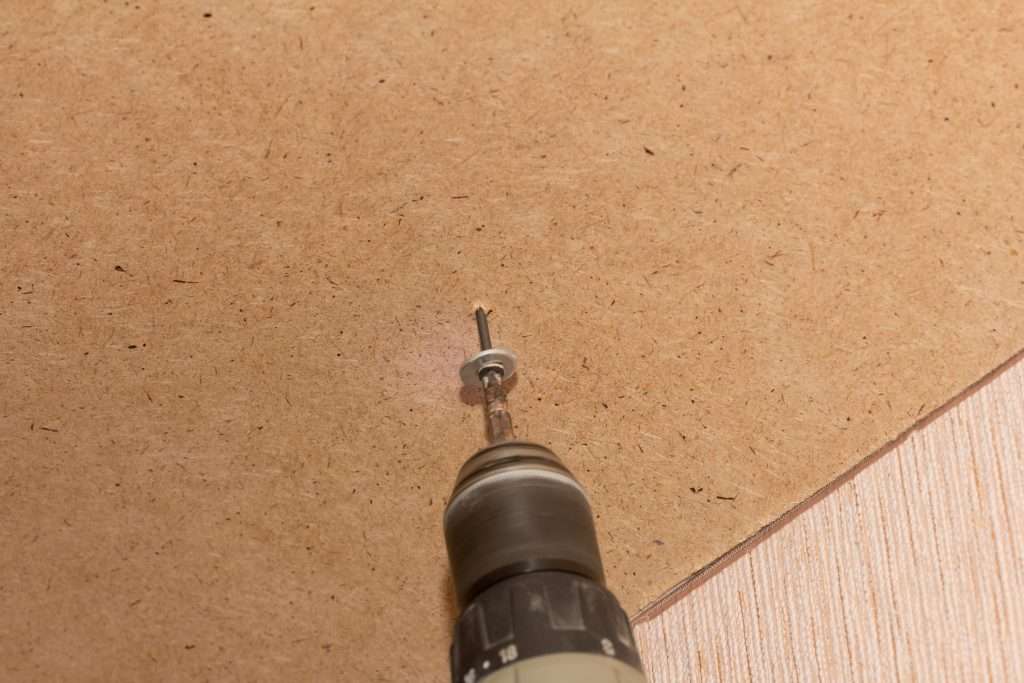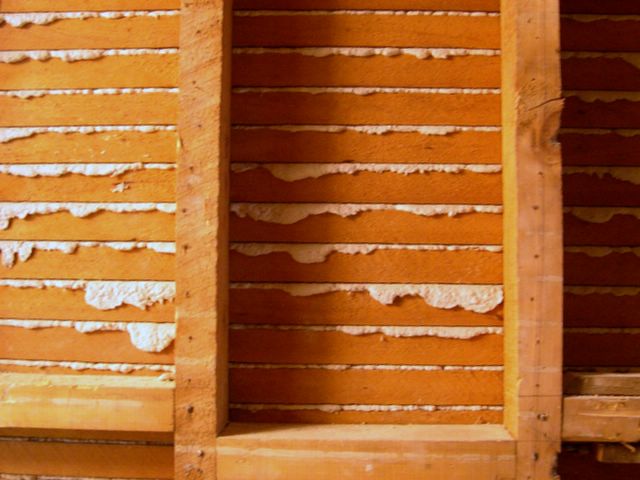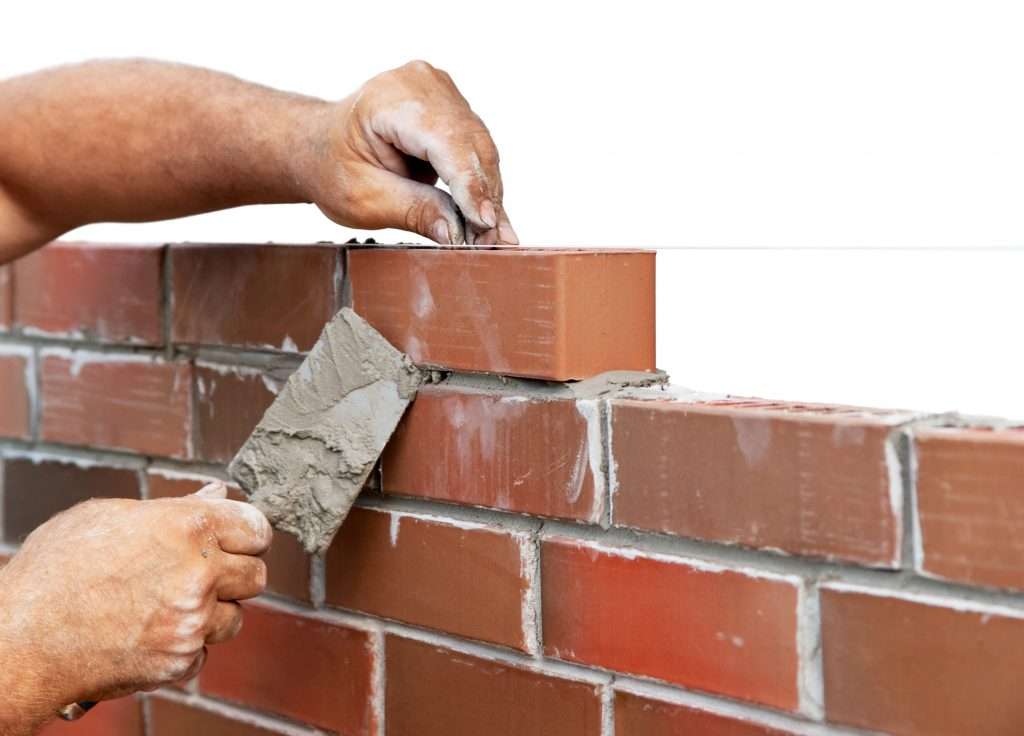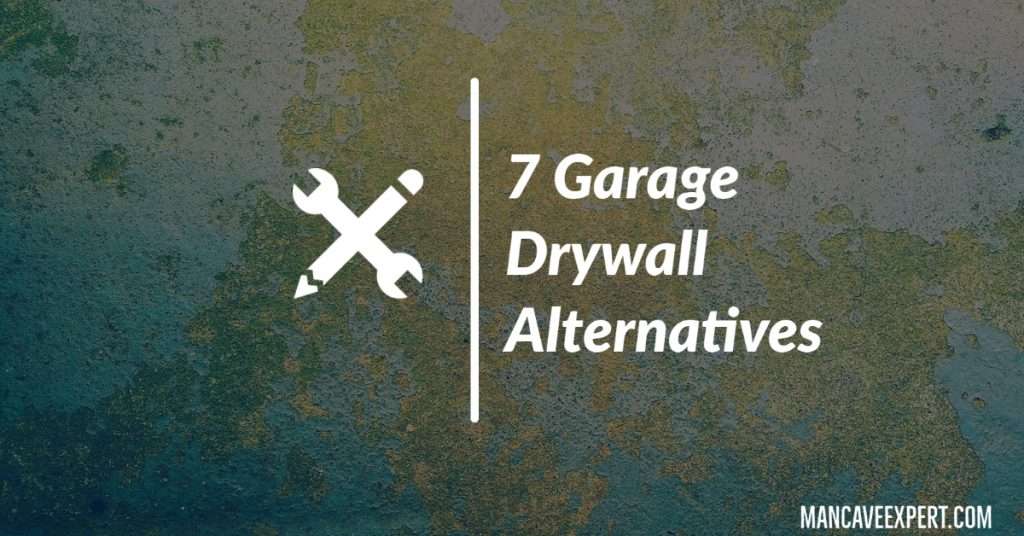Many homeowners add drywall to their garages because they think it makes the home more valuable and appealing. However, some homes might need something more durable, heat resistant, or attractive than thin drywall.
Thankfully, there’s a lot of accessible options to build your garage differently. Let’s take a look at the best garage drywall alternatives.
1. Wooden Sheathing
 Wood is reliable for both practicality and design. You can pick dark, light, or cherry woods that look good in your garage. Or, you can find one that provides a good base for painting.
Wood is reliable for both practicality and design. You can pick dark, light, or cherry woods that look good in your garage. Or, you can find one that provides a good base for painting.
A few specific wooden sheathing options include plywood, oriented strand board (OSB), and medium-density fiberboard (MDF) for your garage. These three choices are thinner wood panel options, making them easy to install.
To set it up, you can just screw the panel onto the garage’s wooden frame. Some woods like MDF also come in different colors. Therefore, if you opt for that style, you can skip the painting step completely.
A disadvantage of wood sheathing is that you’ll need to caulk any spaces in between panels. Since wood is sensitive to water, you need to ensure that moisture doesn’t become trapped in the grooves. Plus, caulk helps prevent air leakage.
Overall, it’s an affordable, flexible option for many homes.
2. Slatwall
You can find slatwall made of plastic, metal, or even wood. Stores tend to use them in their displays because they’re affordable and easy to present merchandise. While you probably aren’t looking to sell any products from your garage, the slatwall can simplify organization for you.
Slatwall has long, narrow panels with grooves you can hook things onto. You can put peg hooks in the joints to prop up bicycles, nets, and other equipment. Maybe you want to build a garage shelf. If that’s the case, a slatwall can maximize your vertical space more efficiently.
While most stores have plain white slatwall, it actually comes in a lot of different finishes. Painting slatwall is a tricky task because you need to make it smooth over the grooves. Still, the initial installation isn’t very hard.
To install slatwall, place a horizontal J trim at the bottom of the garage wall. Screw stubs into it, and then line up vertical J trims into the stubs. Next, connect the joints with a drill, and begin sliding the grooved panels on until they lock in place. If you don’t want to paint it, then you’re good to go.
3. Fiberglass Reinforced Plastic (FRP)
Unlike wood, fiberglass reinforced panels (FRP) are resistant to almost anything. It doesn’t hold moisture or attract pests like bugs. It might collect a little dust, but it’s easy to clean. As an added plus, FRP is a type of plastic, so it can withstand more cleaners without damage than wood or metal can.
FRP gives your garage a glossy finish. On the flip side, it’s not very flame resistant. You may also require a backer to install it. If you already have oriented strand board in your garage, you can bond it onto that. As a rule of thumb, you should only install FRP over solid surfaces.
If you have drywall you want to replace, you can paste FRP over it with a water-based adhesive. However, if you’re working on another substrate, you might be able to use rivets instead. You can use electric shears or a circular saw to cut them down as needed.
4. Polyvinyl Chloride (PVC)
 PVC is another type of plastic, making it easy to cut. It’s highly water-resistant and weighs less than other materials. Unlike FBR, it usually has a smooth finish.
PVC is another type of plastic, making it easy to cut. It’s highly water-resistant and weighs less than other materials. Unlike FBR, it usually has a smooth finish.
You can even find creative designs for PVC panels. For example, if you want your garage to double as wall art, there are 3D-effect PVC panels.
Plastics like PVC repel moisture but attract more dust than wood or metal. However, they also look like plastic, so it’s not to everyone’s taste. Keep in mind that PVC can sag over time, so you may need to adjust it later.
These downsides don’t make it any more difficult than average, though. If anything, you might like how easy PVC is to install.
You don’t need to bond it to any solid surface. Instead, you put horizontal J trims at the top and bottom of a wall. Then, you can drill the fastener holes into the wooden frame, and you’re good to go.
5. Lath and Plaster
 Construction workers used to use lath and plaster instead of drywall in most homes. They’re more difficult to set up but have some bonuses.
Construction workers used to use lath and plaster instead of drywall in most homes. They’re more difficult to set up but have some bonuses.
For one, lath and plaster are thicker than drywall. They give you good insulation and reduce sound pollution.
Lath and plaster are made of long strips of wood lath. You would nail them directly onto open wall studs. Then, you layer about 3 coats of plaster onto the wooden frame.
The painting stage is what makes it take longer to install. But you can experiment with putting different plaster dyes to change the hue of your gage. Plus, you might enjoy the process if you consider home improvement a hobby.
Lath and plaster materials aren’t expensive, but hiring someone to install them is. You should also know that the plaster can crack if a house sets on it over time. Still, lath and plaster are one of the most creative garage drywall alternatives to feel like you curated your home.
6. Concrete Panels
 Concrete boards don’t absorb moisture, which makes them great for hotter climates. The tough material also makes them more durable than alternatives like plastic.
Concrete boards don’t absorb moisture, which makes them great for hotter climates. The tough material also makes them more durable than alternatives like plastic.
The durability comes with a catch. Concrete panels may be heavy to install. While they don’t hold moisture, you have to seal the sides in between panels well. So, consider investing in a lining made of vinyl to keep those sides sealed from water.
On the flipside, concrete panels give you a lot of room for creativity. You can put tile or stone veneers over them to stylize them. Installing faux stone panels makes it even more affordable to up your garage’s appearance.
To install concrete boards, you’ll need an adhesive and a backer. It can go on an OSB backer, although it depends on how thick your boards are.
7. Brickwork
 Brick might be the fanciest and most complex garage drywall alternative here. However, installing bricks in your garage pays off with a few benefits.
Brick might be the fanciest and most complex garage drywall alternative here. However, installing bricks in your garage pays off with a few benefits.
For one, adding brick to your home increases its value. It looks very classic, and it’s a sturdy, reliable material. As a bonus, it’s fire-resistant. There’s a reason it’s one of the most popular building materials in architecture.
Brick can be pricey to install. If you don’t want to install it yourself, you might need to hire a mason. Also, bear in mind that it can get dusty. If you do work in your garage like repairs, maybe pass on this option to protect it from damage.
To install brick in your garage, you need to mark its placement on the wall with a pencil first. Make sure to account for grout in your drawings.
Then, you prepare stone wrap glue and begin bonding the bricks to their spots. When you’re done, it takes 3 to 4 hours to dry fully. Then, you can pipe in grout mixture between the joints. For touch-ups, use a smaller adhesive to bring it together.
Alternatives to Drywall in Garage
We hope this article gave you all the information you need to choose a drywall alternative for your garage. If you decide to install any of these materials, we recommend you watch a video guide first. Tutorials for all of these methods are available for free on YouTube. Seeing a professional install walls like brick can help you get tips to make construction easier.
If you want to install one of the options above, but you’re not a DIY kind of guy you could also hire a handyman on Angies List.
With the above alternatives, you have plenty of options besides drywall to get the best-looking wall for your garage man cave.


